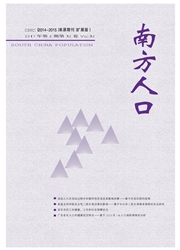

 中文摘要:
中文摘要:
本文利用2005年全国1%人口抽样调查数据,描述老年人口跨地市级迁移的结构特征。研究发现,我国老年人口依旧把经济发达地带、大城市作为主要迁入地,与青壮年人口迁移方向产生同构。城乡老年迁移人口在迁移动机上存在很大的差别,城市户籍老年迁移人口受家庭因素驱动更大,农村户籍老年人的迁移原因更多元。从对迁入地的影响来看,国内老年迁移人口的迁入地过于集中,将对迁入地的社会医疗服务设施等构成巨大的压力。
 英文摘要:
英文摘要:
Based on the data from 2005 National 1% Population Sample Survey, the paper describes the features of elderly intercity migration in China. It finds that China's elderly population tends to choose economically developed areas, big cities as their major destination to migrate just like the young population. The migration motivation shows a great difference between the urban and the rural elderly. The urban elderly's migration is more likely to be driven by family considerations while the rural elderly's migration may be motivated by more diversified reasons. As the migration all most all direct to the cities especially the cities in the economically developed areas, such migration may bring enormous pressure on the social and medical services in the cities.
 同期刊论文项目
同期刊论文项目
 同项目期刊论文
同项目期刊论文
 期刊信息
期刊信息
